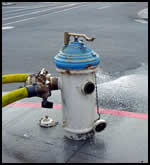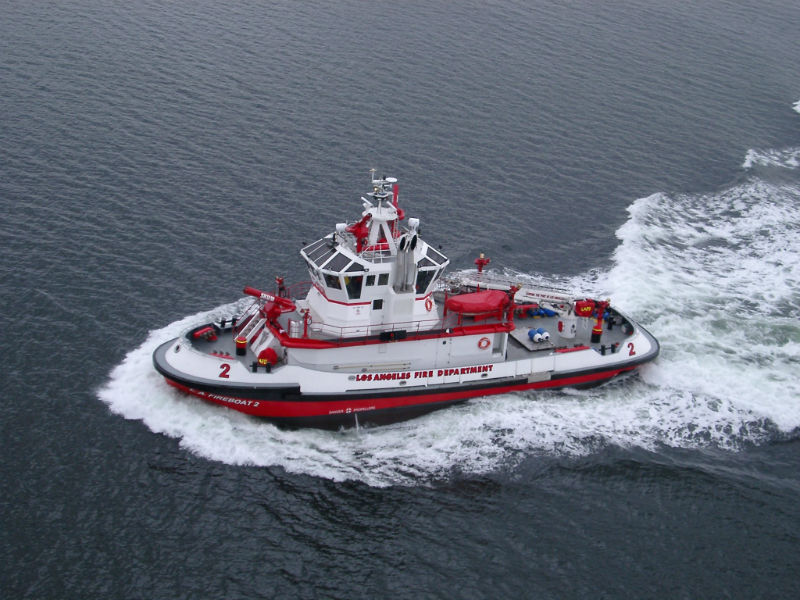I can't imagine anyplace that has separate systems for drinking water and hydrants. It is the same water. Fire departments routinely flush out hydrants and this churns up sediment that settles in the piping and residents will be told to let their water run until it runs clear.
One of the videos I linked had an explanation of how San Francisco has two water systems for fire hydrants, and the hydrants are different when attached to each system.
High Pressure Auxiliary Water Supply System

The Auxiliary Water Supply System, more commonly known as the San Francisco Fire Department High Pressure System, is a system of mains and 1889 High Pressure Fire Hydrants, independent of the domestic water supply, built solely for the purpose of firefighting. The system is supplied with fresh water, by gravity, from a reservoir and two tanks located at high elevation in the city.
I suppose one of the questions was probably about why not pump to the maximum height in the area. I guess that sounds great in practice, but how much is it going to cost? I know where I live (on a hillside) there's an elevation surcharge for water. This explains how they "stratify" water storage to bridge between water needs at higher elevations and the cost of pumping. I guess people can make all the claims about overengineering a system for an absolute worst case scenario, but in reality, who wants to pay for that?
Water delivery becomes more complicated in hillside communities. The East Bay Municipal Utility District (EBMUD) distribution system covers over 1500 feet of elevation changes throughout the Oakland-Berkeley hills. If all water storage was kept at the highest point of the system, water pressure at the lower levels would be about 650 p.s.i. and the cost of pumping the water supply to such a high storage elevation would be prohibitive.
To provide water to hillside communities, the distribution system has to be stratified into multiple zones with each zone serving a specific elevation area. This stratified design is known as a "cascade system."
Each zone is served by one or more reservoirs and is its own self-contained distribution system. Reservoirs are designed to provide at least two days of domestic consumption plus have a reserve capacity to provide between two and three hours of required fire flow.


